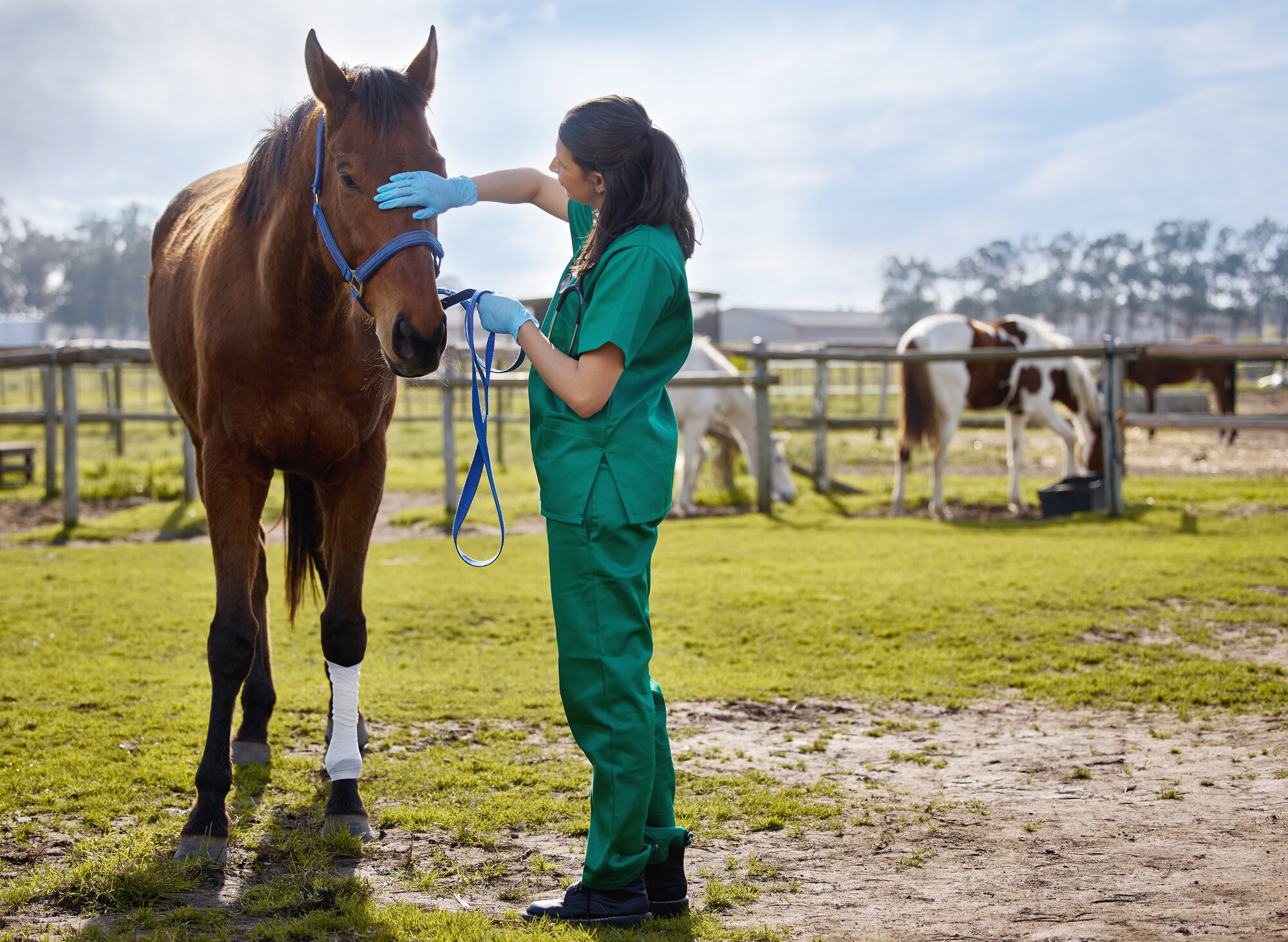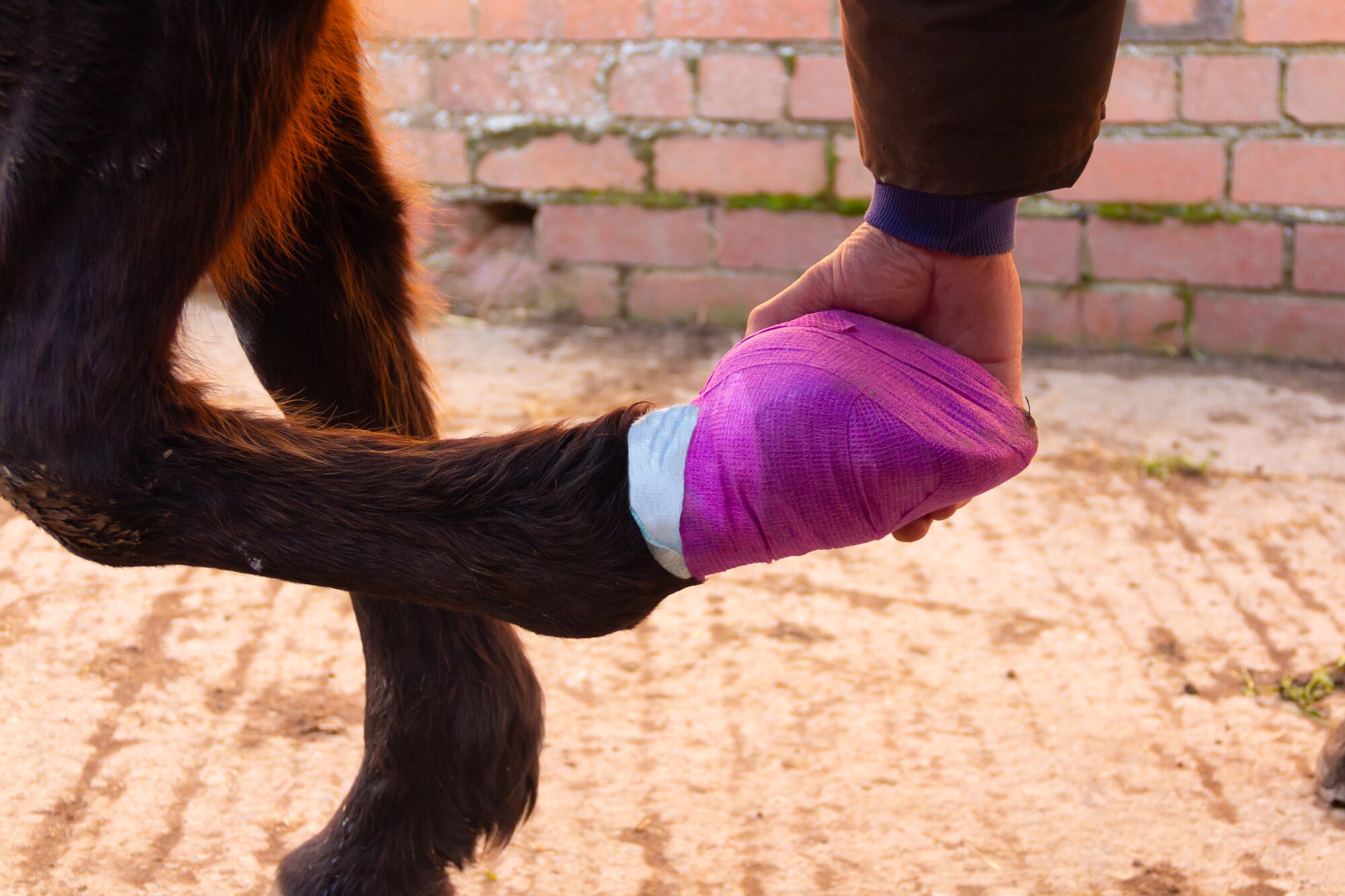Last Updated: 02/10/2025
Horse First Aid
Have you wondered what to do if your horse gets injured? Read more from our vet team about horse first aid and what you can do at home to help.
Author: Dr Teagan Lever BVSc (Hons)
Reading Time: 2 minutes - short read
Every horse owner knows that it's less of a question of 'if' but rather 'when' when it comes to horses and accidental injuries. Accidents and injuries happen when we least expect them, so it pays to have a first aid kit and some basic first aid knowledge on hand to help you take control of the situation.
When to call the vet

While some wounds and injuries may be able to be managed by you and your trusty first aid kit, it's important to know when to seek veterinary attention. As a general rule, you should call in the vet for:
- Heavy bleeding that won't stop despite applying pressure
- Wounds that appear infected
- Wounds that appear to involve tendons, muscle, bone or joints
- Suspected bone fractures
- Wounds that penetrate the abdominal or chest cavity
- Very deep wounds
- Difficulty breathing
- Injuries causing the horse to have difficulty walking
- Unsteadiness, loss of balance or collapse
- Choking on feed
- Suspected colic with fluid diarrhoea or ongoing pain
First aid kit
Keep your first aid kit somewhere close at hand and remember to carry it with you in the car when travelling to competitions and events. Keep a laminated inventory list with your kit so that you can easily see what needs to be restocked; there's nothing worse than opening the first aid kit in an emergency to find it missing essential items!
Suggested equine first aid kit items
Bandages and wound dressings
- 2-4 x rolls adhesive bandage
- 2-4 x rolls cohesive bandage
- Electrical tape (for use over bandaged hooves for additional protection)
- 1 x roll of cotton wool
- 1 x roll of cotton combine dressing
- Non adhesive wound dressings
- Pack of gauze swabs for dressing, packing and cleaning wounds
- Absorbent pads to control acute bleeding
- Poultice
Wound care
- Wound antiseptic spray
- Antiseptic cream/ointment
- Antiseptic solution for making up diluted wound cleansing solution
- Sterile saline
- Fly repellent
- Petroleum jelly
Additional equipment
- Latex gloves
- Clean plastic buckets x 2
- Thermometer
- Large syringe for flushing wounds (60mL, can use cleaned out worming paste syringe)
- Tweezers
- Curved, blunt ended scissors
- Torch
First aid products for horses
Wound management

Management of fresh wounds
If a wound has just happened, first apply pressure using absorbent dressings, bandages or clean towels. Once the bleeding stops, you can then take a closer look to see if the wound involves any important structures, such as joints, tendons, bone or muscle. If the wound stops bleeding and doesn't involve any of the structures mentioned above, move the horse to a safe place so that it can be thoroughly cleaned. Hose the wound with clean water or use a large syringe to flush with plenty of sterile saline or diluted iodine solution. Once the wound has been thoroughly flushed, apply an antiseptic ointment or spray and a protective dressing if required. Check the wound daily to monitor progress and re-apply antiseptic as needed.
Management of older wounds
If a wound appears to have occurred some time ago, there is a higher likelihood that it may have become infected. Signs of wound infection in horses includes yellow, grey, green or brown discharge (pus), redness, swelling, high temperature and general signs of being unwell. If the wound does not appear infected and does not involve any deeper structures like bone, muscle, tendon and joints, it may be managed the same way as described for a fresh wound above.
If your horse has a wound, whether it is old or new, be sure to check that they are up to date with their tetanus vaccinations. Horses should be vaccinated at least every 12 months against tetanus and given a booster again if a wound occurs. If your horse's vaccinations are out of date and a wound occurs, consult your veterinarian for further advice as a dose of tetanus antitoxin may also be required.
Remember that even small puncture wounds have the ability to penetrate important structures resulting in serious structures, so if you are in doubt it is always best to seek veterinary attention.
Articles recommended for you
Our vet authored guide to the benefits of feeding your dog fresh food plus tips and advice for introducing it into their regular menu.
See our guide to protecting your pet from parasites from our vet team.
Thinking of getting a fish? Check out our guide for setting up a tank and home care tips!
Looking to understand horse feeds better? This comprehensive guide covers feeding recommendations for horses of all ages and disciplines.
Does your pet suffer from anxiety? Check out our Vet-guide for treatment options to help your pet.

